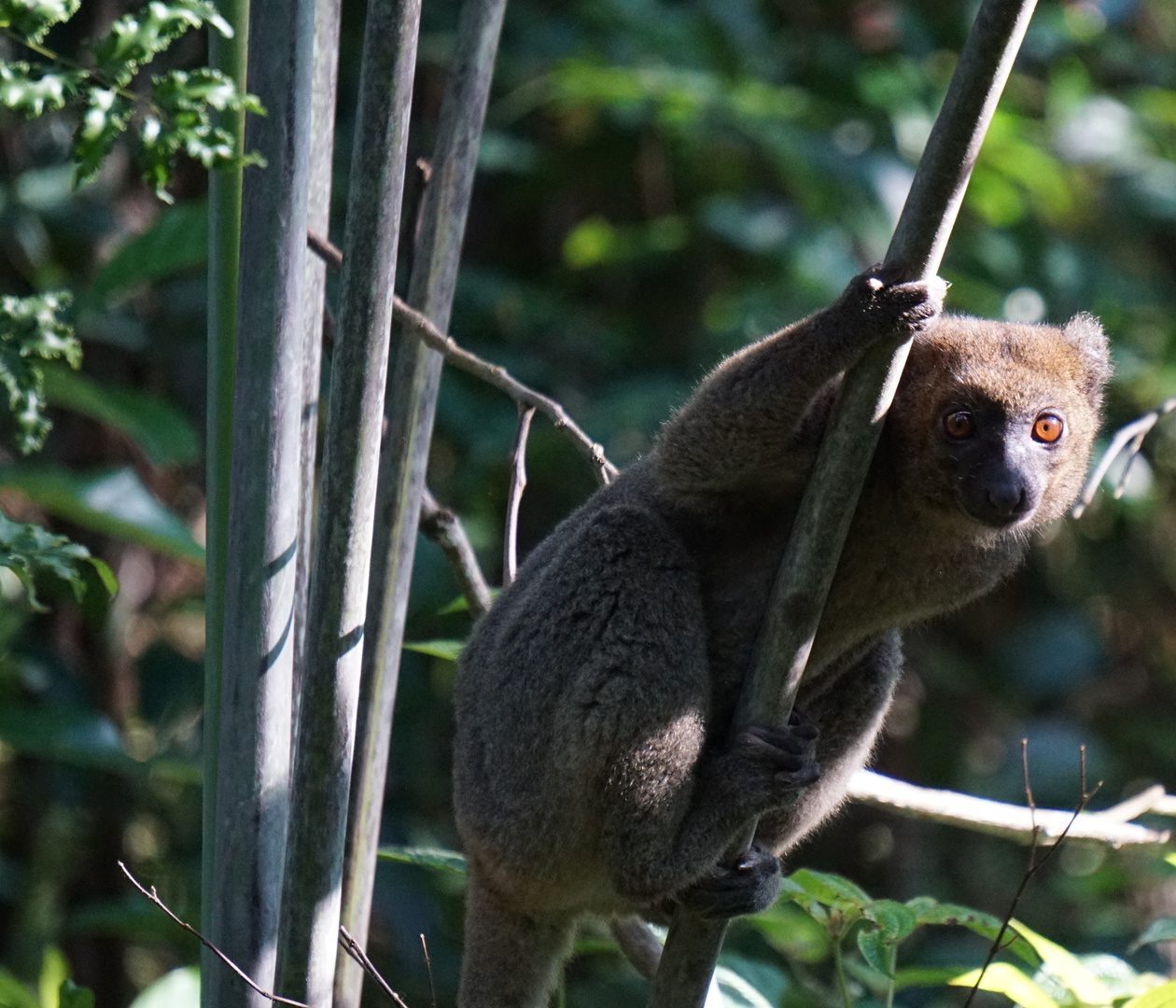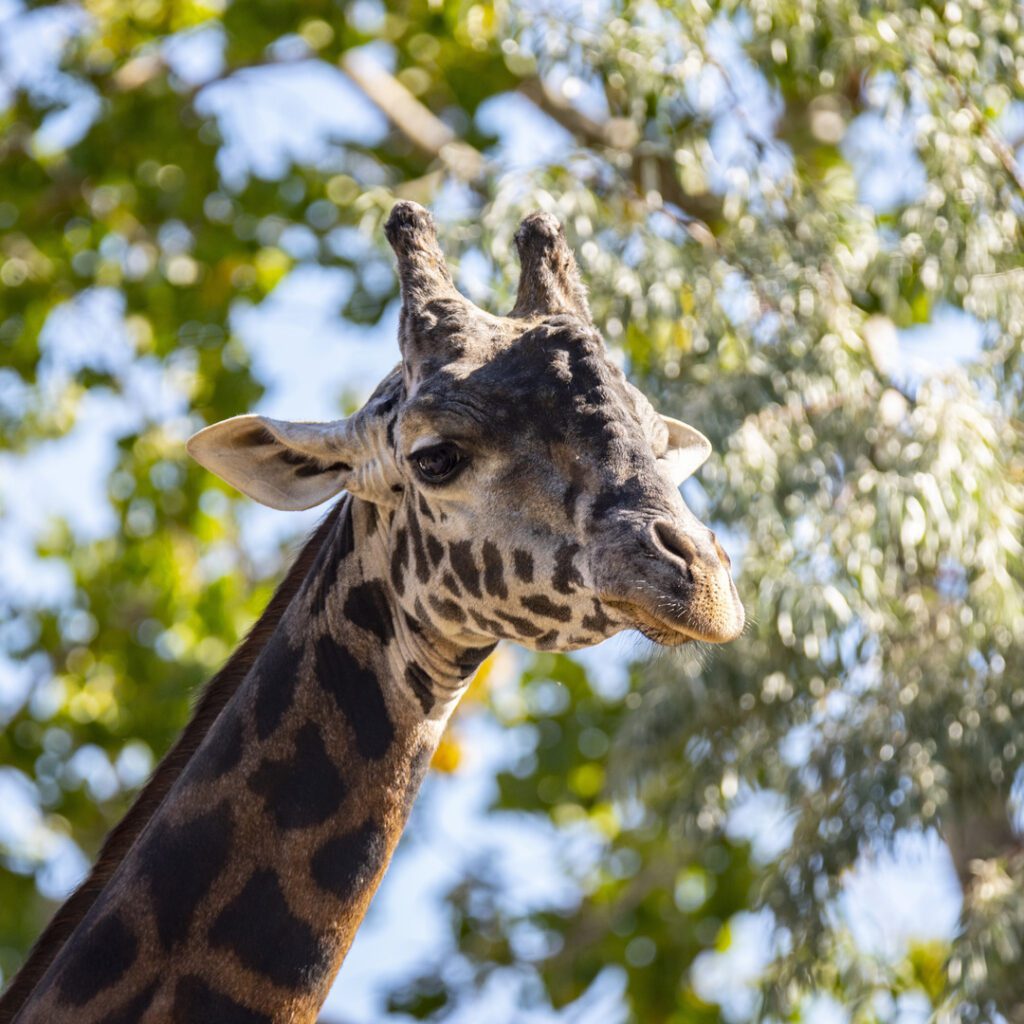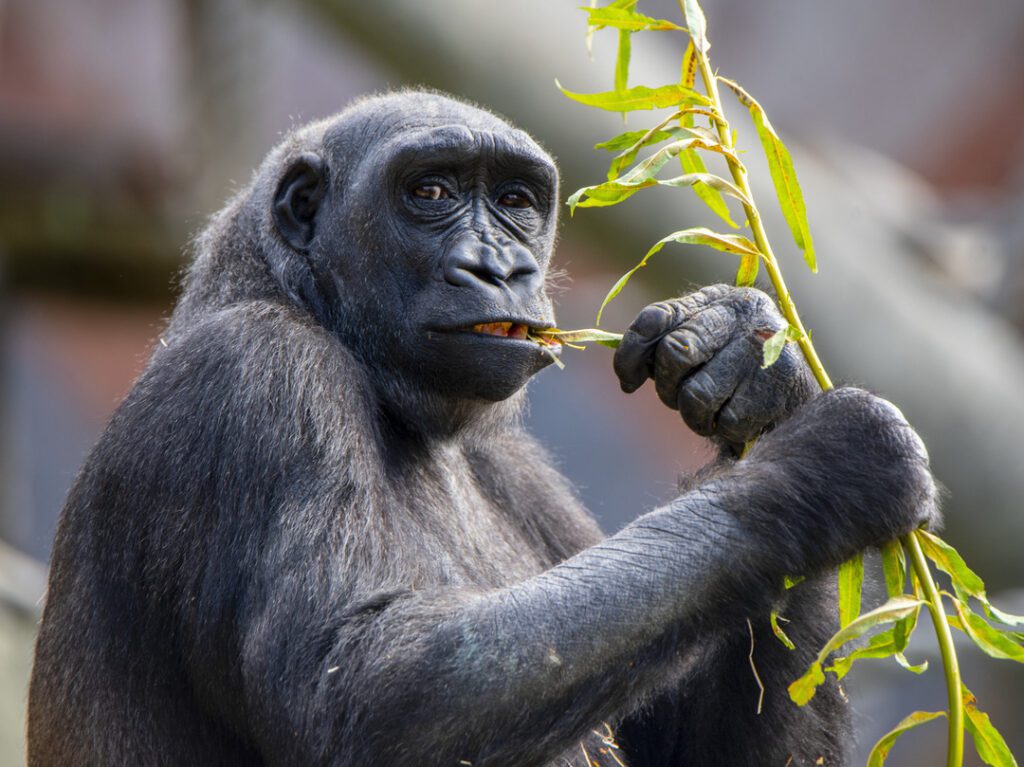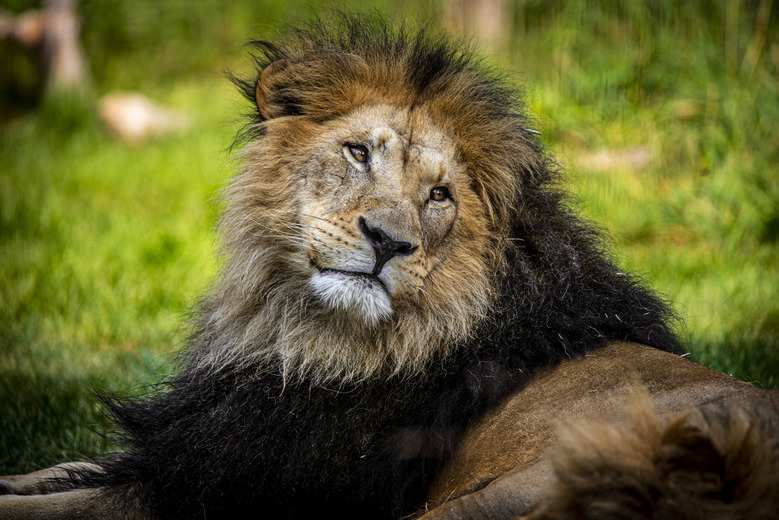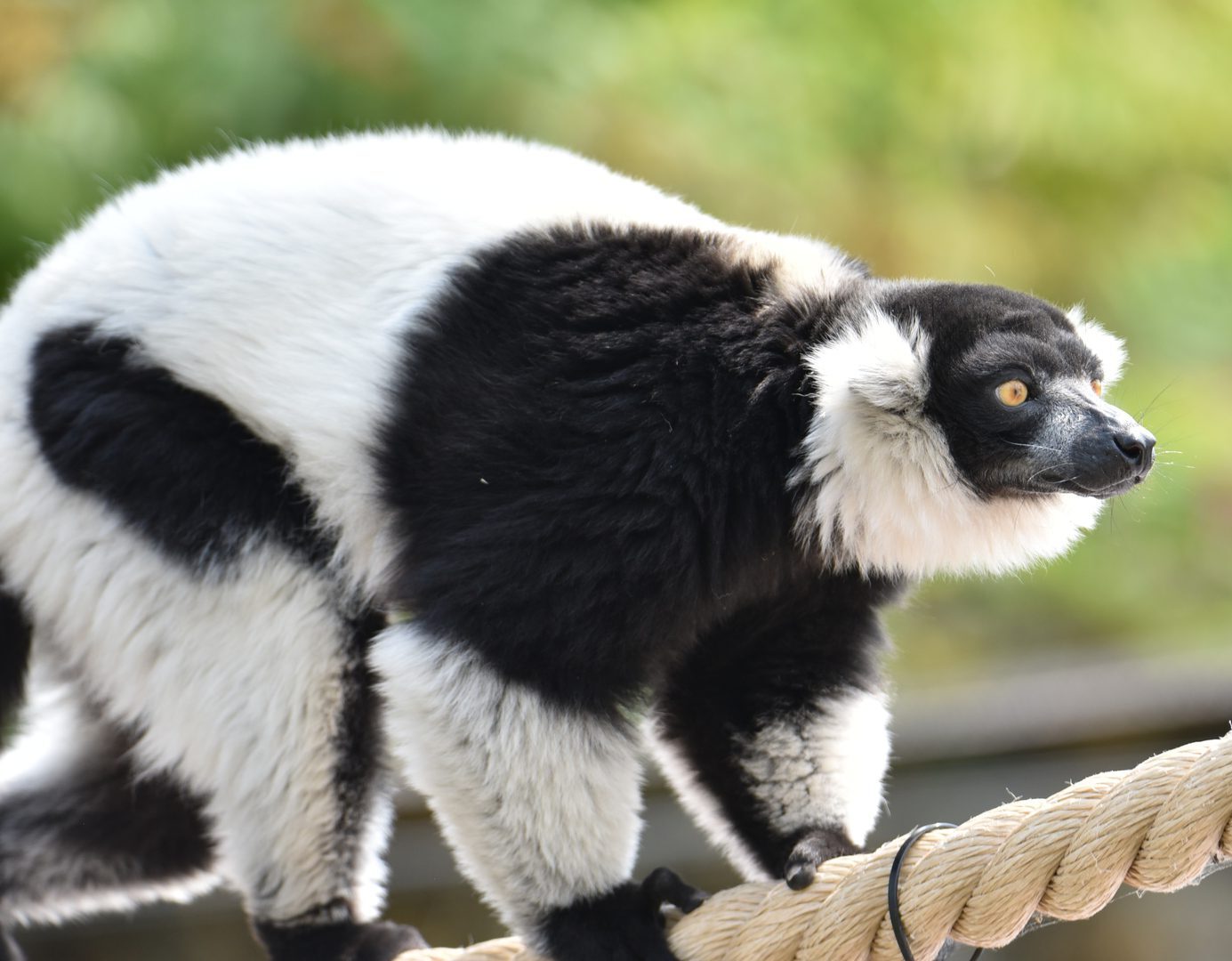
Black-and-White Ruffed Lemurs
Expert tree climbers who pollinate the forest
Black-and-white ruffed lemurs are known for their agility and speed as they move through the forest, using their long tails solely for balance – unlike some of their primate cousins who use their tails to hang. As pollinators, they use their hands to access a flower’s nectar, spreading pollen around the forest when it sticks to their fur. Fruit is a staple of their diet, and they are particularly skilled at hanging from their feet to reach it, a suspensory movement which they exhibit more than any other lemur species.
- IUCN Red List Status: Critically Endangered (at extremely high risk of extinction in the wild)
- Type: Mammal
- Habitat: Forests of Madagascar
- Diet: Herbivore – leaves, flowers, and fruits
- Size: 50 to 55 centimetres; 60- to 66-centimetre-long tail
- Weight: 2.9 to 4.5 kilograms
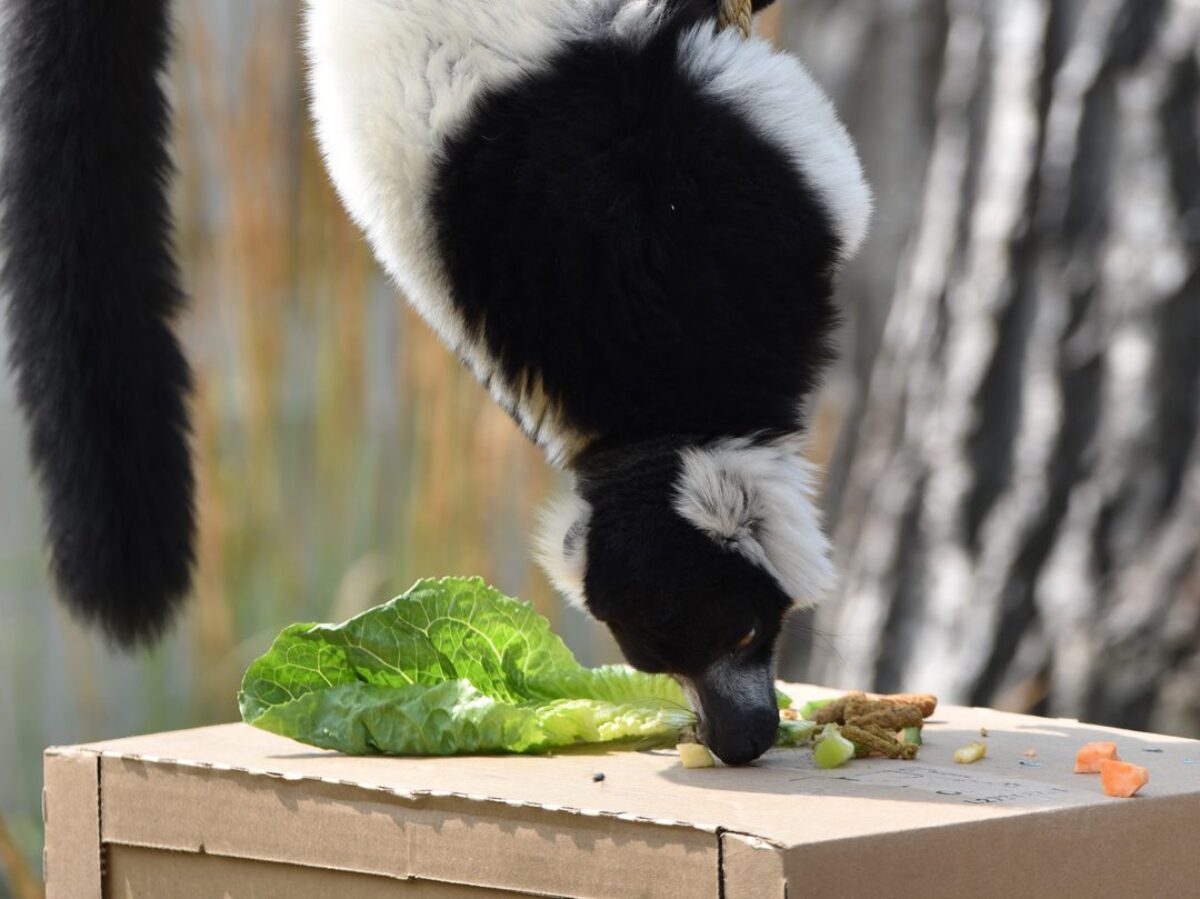
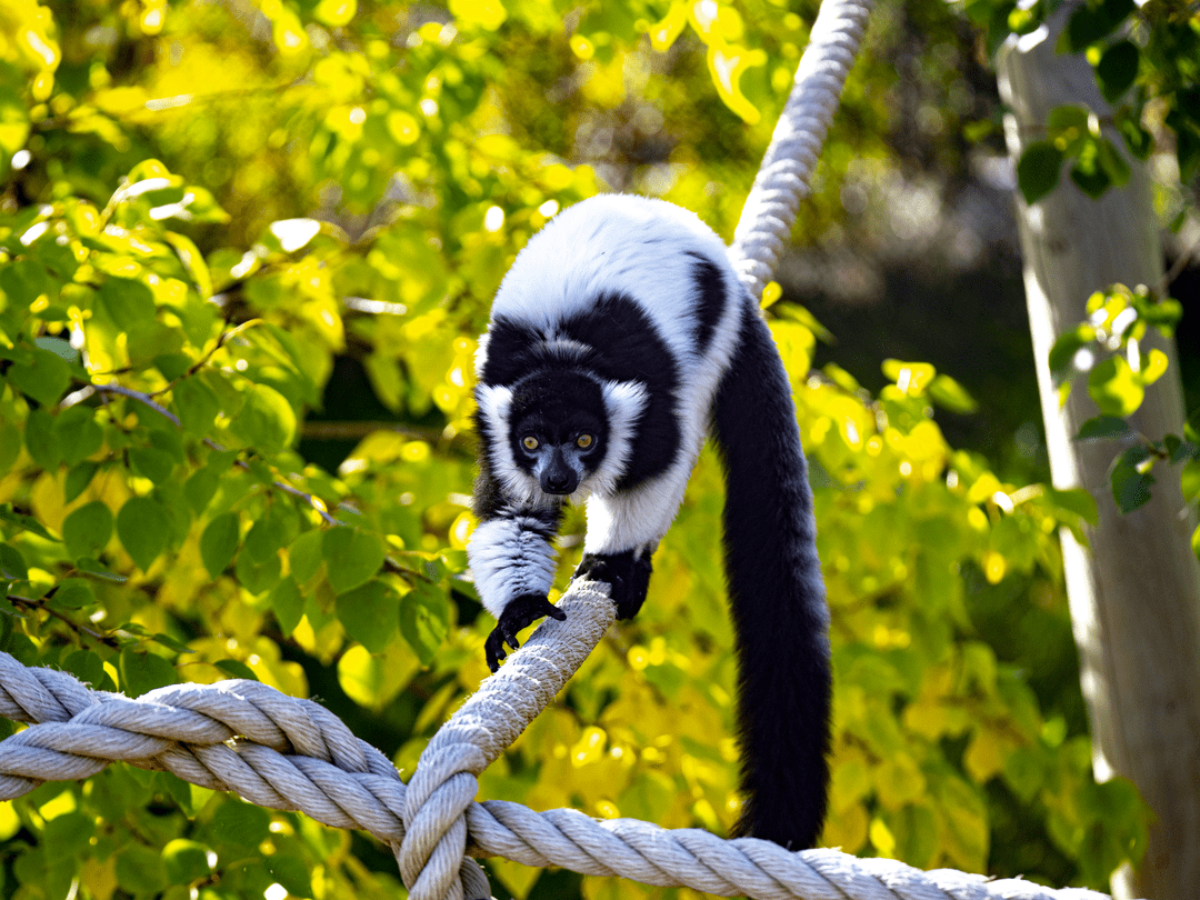
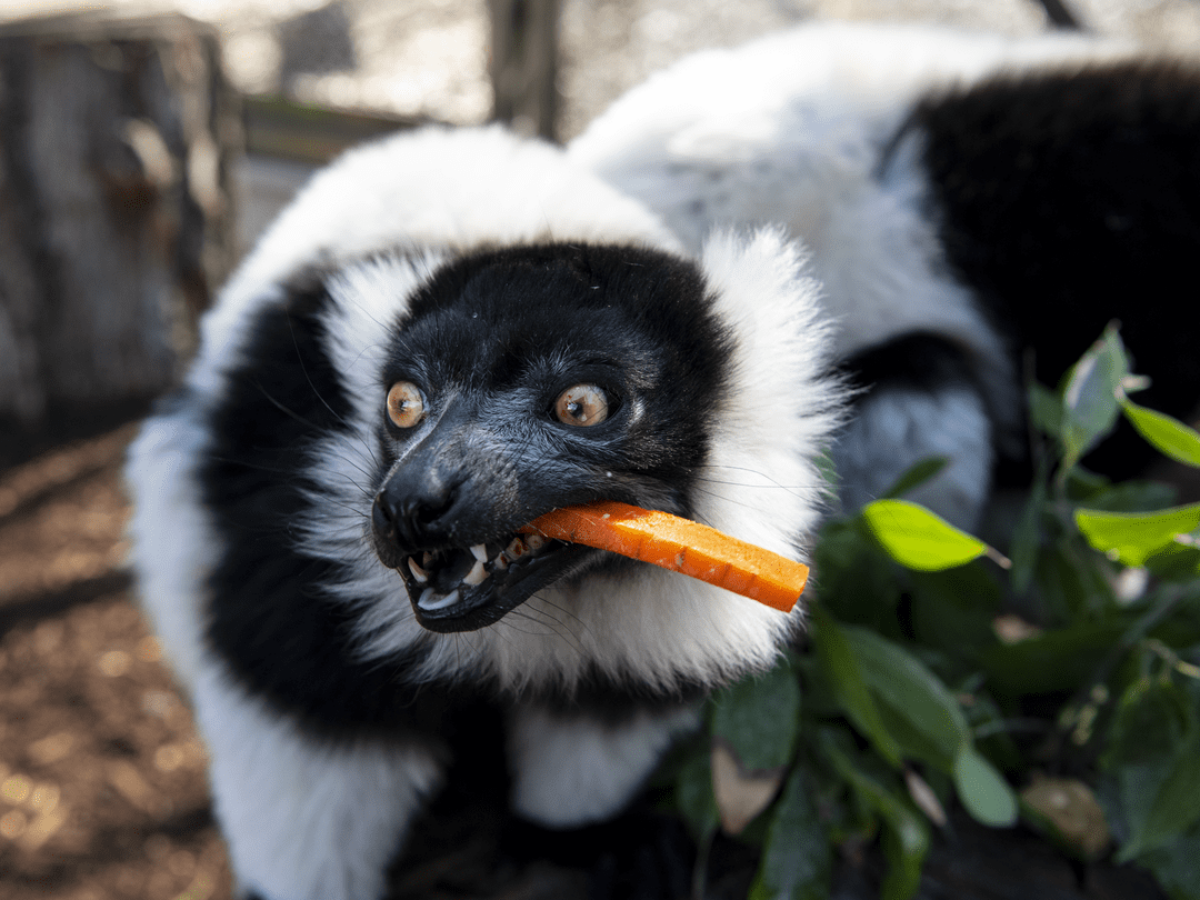
Facts about our animals
Fun Facts about Black-and-White Ruffed Lemurs
Males and females are not sexually dimorphic – they look the same.
They have long tongues to help them reach the nectar in a flower.
Lemur mothers carry their young in their mouths.
A lemur pup becomes independent at approximately four months old.
Black-and-white ruffed lemurs are diurnal, primarily active during the day.
They build nests of leaves and twigs high up in trees.
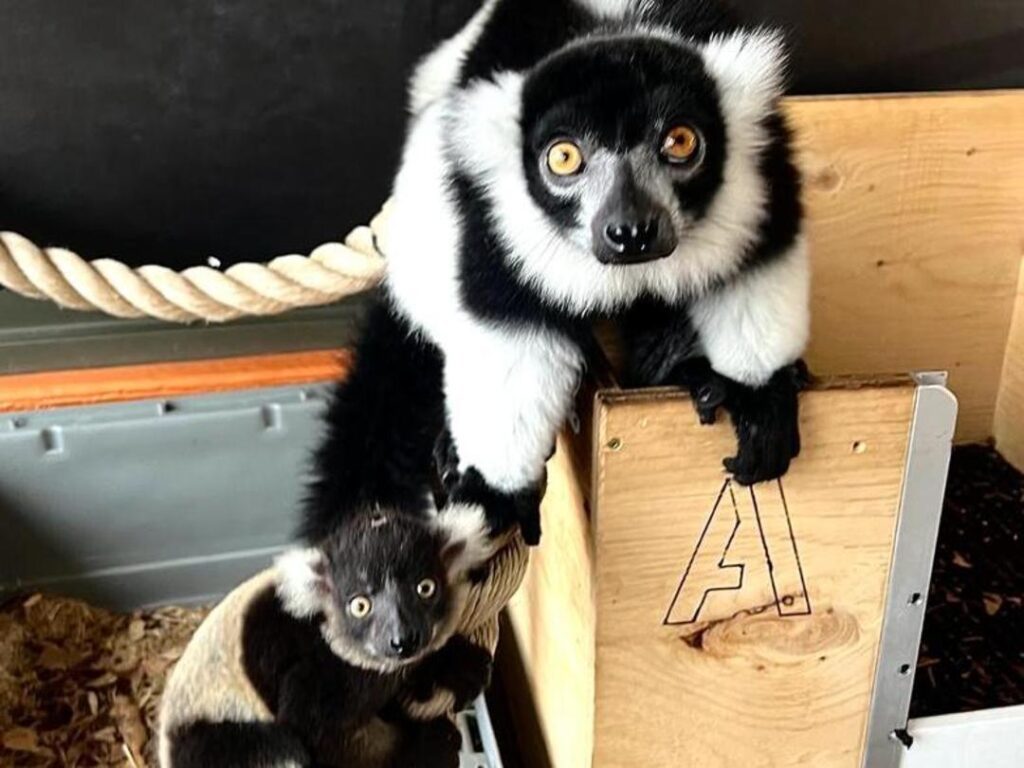
Donate
How you can help
Your donation makes a world of difference. With support for animal care, conservation programs, and education, you’re making the world wilder.
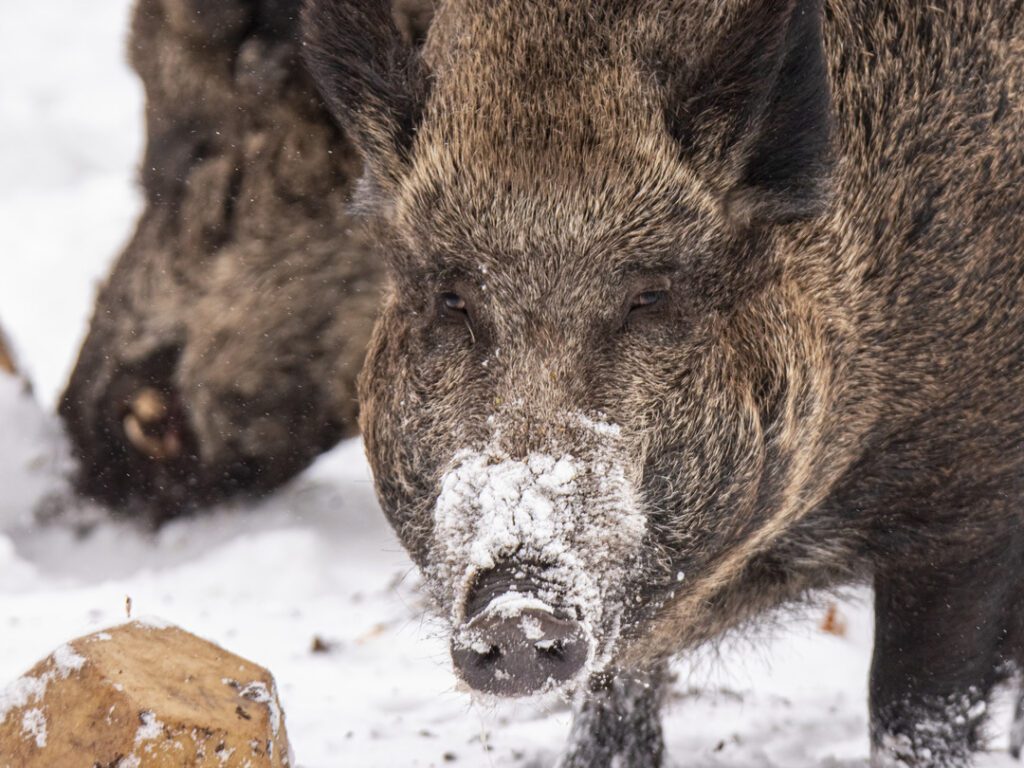
Plan your visit
Get close to wildlife
It’s time to make some memories. Here’s everything you need to know to plan an unforgettable day at the zoo.

